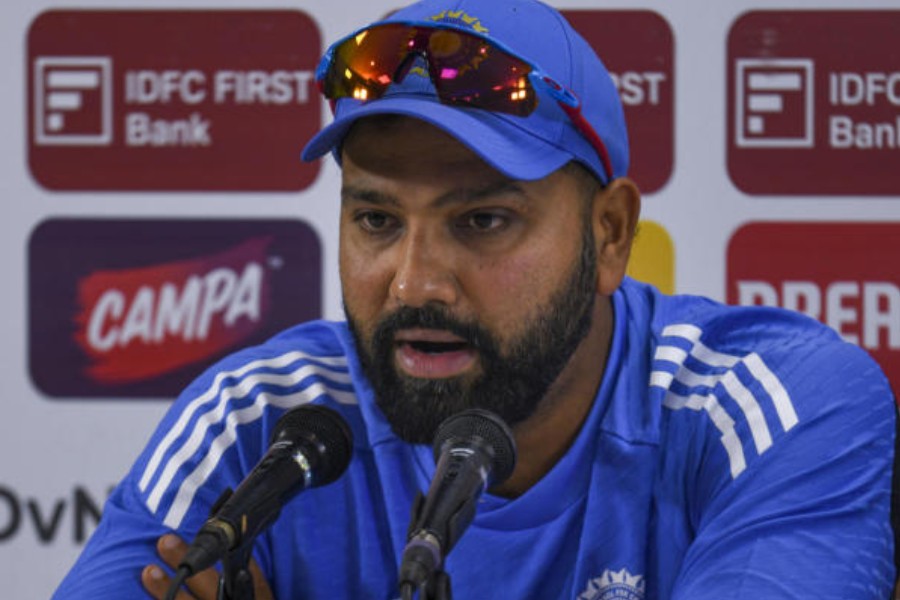Golpata is not gol or round. The leaves resemble palm fronds with the sole difference that unlike the palm tree, the Nypa fruticans does not have a visible trunk. The leaves sprout from the ground and shoot to a maximum height of a young coconut tree. “The golpata grows in clusters and its roots have the ability to hold the soil,” says Suvomoy Mukherjee, who has been working in the Sunderbans for many years now.
Most likely it is this feature of golpata that makes it a good shield against cyclones. And that is why the Bengal forest department has started a plantation drive since December. After all, the India Meteorological Department in Pune has declared Bengal’s South 24-Parganas to be the most cyclone-prone district of the country and the Sunderbans falls in this area.
Besides the commonly found mangrove species — sundari and goran — the uncommon golpata also can save the mud embankments along the river from getting washed away. In fact, Bangladesh has golpata reserves and these have helped them fight environmental hazards.
And yet, even 50 years ago, golpata was found in abundance in Bengal. “It was the leaf wealthy zamindars would use to thatch roofs,” says Swapan Mondal, a schoolteacher from Gosaba. He continues, “It is said that golpata has the ability to keep a house warm at night and cool during daytime. A roof made of golpata is beautiful and also durable, unlike a roof made from palm fronds; it easily lasts three monsoons.” Indeed, golpata was heavily used when asbestos sheets and tin roofings were not quite so popular.
As it happens, excessive use led to the depletion of this tree.
“It is still found in the core area of the jungle,” says Debal Roy, the chief wildlife warden of Bengal. “We have now started planting them in the buffer zone of the forest, but not for commercial use. It is more for preservation and conservation of the species,” he adds.
Besides golpata, the forest department has identified 45 more plant species that are either near extinction or endangered and is trying to conserve them.
Says Anjalibikash Mandal, who is a retired schoolteacher living in Dayapur in the Sunderbans, “Golpata grows gregariously and is always found in a continuous stretch. It grows by riverbanks or in low lying areas or the deltaic region of the Sunderbans. And the low lying parts of the Sunderbans are not in India anymore; they are mostly in Bangladesh.”
Mukherjee, who has started a cooperative for collecting honey from the forests of the Sunderbans, says his next initiative will be to bring back golpata.
Between January and March, almost around the time when date palm jaggery is made in Bengal and Bangladesh, the golpata flowers bloom and are heavy with juice. The spiky-looking flower that resembles a full-grown pine cone is ripe and ready for extraction. According to Mukherjee, experts from Bangladesh came down to South 24-Parganas not long ago and showed him and his colleagues the process of extracting juice from the flower.
He says, “The juice is used to make jaggery.” And Bangladesh has been making gur or jaggery from the tree for many years now. According to news reports, it is a very profitable business in Bangladesh and generates employment. In a village in south Bangladesh, farmers have sold golpata jaggery at Rs 60 to Rs 70 per kilo this year.
It is reported that the juices extracted at dawn and dusk from the flowers are boiled to make jhola gur, a kind of jaggery of pouring consistency. A farmer who collects 12 kilos of molasses in one day can earn up to Rs 1,000 per day.
According to Mukherjee, it tastes very different from nolen gur or date palm jaggery but it tastes good.
“Even sugar can be made from golpata. It is brown and less sweet,” says Mandal. And it is also very profitable for the growers.
But all this will happen only when the tree is available for extraction commercially. Mandal has his doubts. He says, “Golpata should be planted where there is alluvial soil. But in the Sunderbans, most of the riverbanks have eroded over the years and what remains is hard soil that is unfit for planting of new saplings.”











